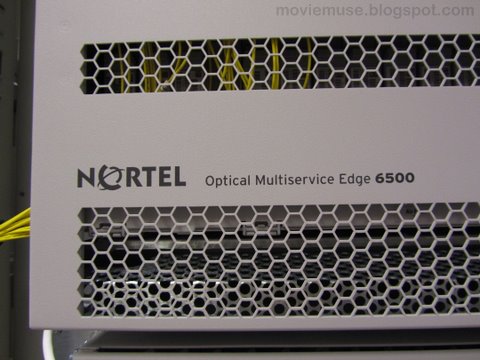
This is what it looks like once it's all done:
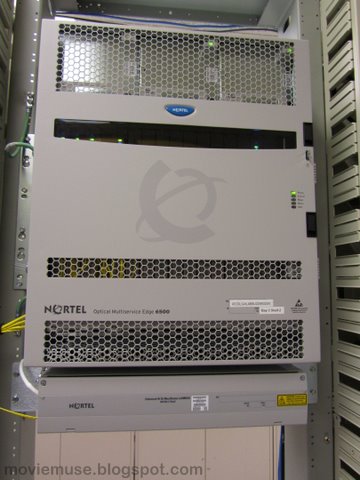
But when it is delivered to the site, it looks like this:
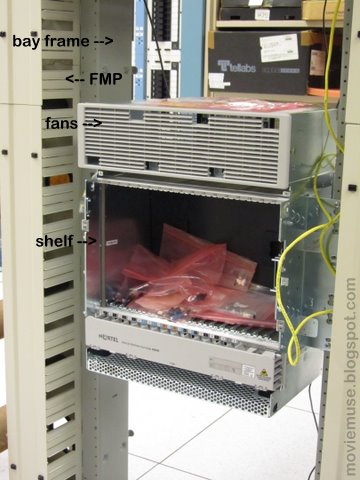
I am the project manager for the installation of these things. Everything you see in the pictures: the frame around the outside (bay), the slotted thingy on the left side (FMP: Fiber Management Panel), the "shelf" with the cards in it, the fibers (see below photo for cards and fibers), all of it. For "big sites," these shelves comes premounted in the bay (think of this as like a standard house door frame; see labels above), two shelves per bay, 2-3 bays per large site. There may also be some overhead racking and stuff that needs to be installed to hold the new fibers and cables we will be running to other parts of the building.

(Ignore the horizontal gray things at the top. These are actually for different types of equipment than what I manage, but it had a better example of racking.)
For small sites, there is only one shelf per bay, but it comes separate from the bay and has to be mounted once it arrives. Naturally, the shelves and bays come from separate manufacturers, so I have to make sure we have all the parts *and* that they arrive on site at the same time. Small sites can also have some racking, but it is much less significant, considering many of the offices are only about 20 feet x 20 feet. Large offices can have 30-40 floors or more, easily mistaken for a typical business skyscraper in a large city. (There are two that size in New York City!)
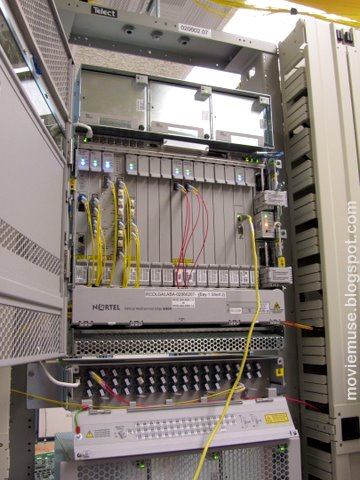
Once the bays are in place, we start slotting the cards to fill the shelf. Each of these plugs into little pins in the back of each slot. Only certain cards can go in certain slots, so reading the diagram is critical.

Once the specialized cards are loaded, they then have to be "fibered up" (have these yellow fiber optic cables attached) to actually carry the data traffic. As you can imagine, with two shelves per bay and 2-3 bays per site, the large sites can take quite some time. They also have to run power cables and connect them up (you can't just plug these things into a wall outlet), and they have to run some of the fibers over to the place where the bay fibers (these in the photos) connect up to the outside fibers so the traffic can get out of this office and on to the next one. Occasionally, that connection spot is on a different floor! You can imagine how fun it is running fibers made of glass that are hundreds of feet long between floors of a building. :-)
I don't do the actual physical install, I just coordinate the arrival of the equipment into the warehouse (multiple suppliers involved, several separate shipments), the delivery of the equipment to the office (including some so remote they literally do not have a street address; shipping companies just love that (not)), scheduling the installers to be there when the equipment arrives, and managing the replacement and return of any missing and/or damaged pieces. We install several of these in a row, and I also manage the part of the process that gets each of these "shelves" to talk to each other, both within the offices and between the offices. Installation of a string of large and small offices comprise a "route," so not only do I have to make sure all the sites get installed on time, I have to make sure they are successfully talking to each other with the expected readings at each location. Only when all of that is completed and working properly do we call it "done." Doing all of this is why your smartphones do all that nifty stuff! Fun, right? :-)
These are called "predeploys," which means we are just putting in the basic system so that it is ready when the capacity is needed. I do other types of installation project management as well. There is another system that is similar to this one but has less range. I also manage turning up actual service, which is when the "blank cards" (the ones in the above photos without lights or fibers) are swapped for functional cards and fibered up at a later date. Needless to say, those types of jobs are much quicker: pop out the blanks, put in the packs, run a couple of fibers, test, done. No drilling, no electrical work, no adding rack above the bays to hold these fibers and power cords that you're running all over the office.
I'm not the only one who does this. Here are some other members of the team. I've worked with some of these folks for 4+ years now. I hate the thought that this is probably the lasts time we will all be together! ::sniff sniff::
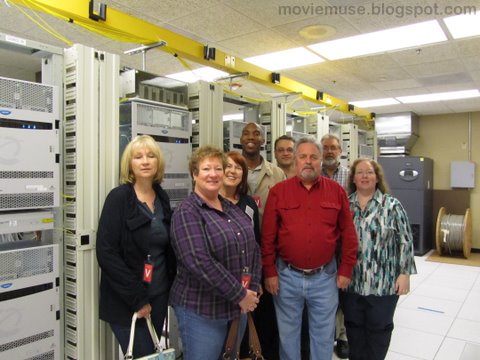
They were kind enough to humor me for a photo in front of our equipment. From left to right: Myira, Pam, Janet, Jason, David (my former manager), Terry, Phil, and me. So there you go! Now that I'm about to stop doing it, an explanation of what I do, complete with visual aid.
Currently feeling:
No comments:
Post a Comment
My apologies for not allowing comments from Anonymous users. I was getting way too much spam. Thank you for taking the time to leave a comment!